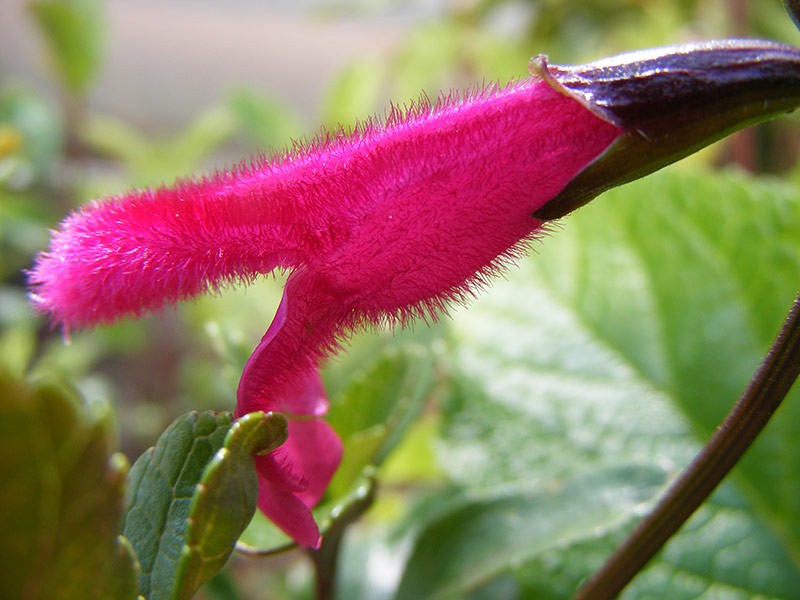Buchanan's sage
(Salvia buchananii)

Description
Salvia buchananii, or Buchanan's sage, is a species of flowering plant in the mint family Lamiaceae. It is a herbaceous perennial or subshrub that was only recently found in the wild in the northeastern extreme of the state of Querétaro, Mexico, after fifty years of cultivation as a garden plant. Seed from a garden plant in Mexico City was taken to England about 1960, where it was grown by Sir Charles Buchanan. It is sometimes called Buchanan's fuchsia sage. Ian Charles Hedge then described Salvia buchananii in the Botanical Magazine in 1963. Salvia buchananii grows 1–2 feet tall and 1 foot wide, with glossy green leaves widely spaced along the stem. The flowers are a rich magenta, about two inches long, which rarely set seed. It was found growing in cloud forest, pine-oak forest, and oak thicket in the far northeastern part of the state of Querétaro, Mexico. It is similar to Salvia blepharophylla. This plant grows well in a temperate climate. However it does not tolerate frost, and requires protection during cold wet winters. It is easy to propagate from cuttings. It has gained the Royal Horticultural Society's Award of Garden Merit.
Taxonomic tree:







